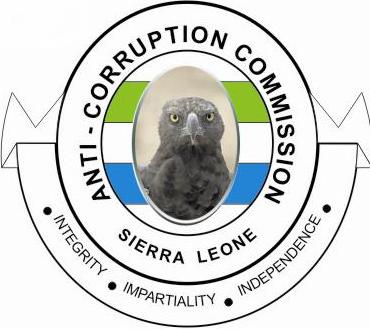By: Bernard Abass Kargbo – Public Education Officer, ACC
I bet the first thing that comes to your mind when you hear about the Anti-Corruption Commission (ACC) is that it only investigates, prosecutes and eventually secures convictions in court which could have offenders behind bars. But is this assertion or opinion of people true? The ACC is an institution tasked by Parliament with the responsibility to “take all steps necessary for the prevention, eradication or suppression of corruption and corrupt practices” and has been vigorously pursuing this mandate for the past 20 years and still remains committed to it now more than ever.
In the eyes of many, the ACC is viewed purely as a vindictive tool which only takes punitive measures after a corruption crime has been committed. For many, the only time they will applaud the Commission is after a lengthy investigation and a successful conviction of corrupt individual(s). Although investigating all instances of alleged or suspected corruption referred to the Commission by any person or authority or which has come to its attention, as enshrined in Section 7 subsection (1) (b) and also to prosecute all offences committed under its Act (Anti-Corruption Act of 2008 as Amended in 2019), form the core work of the ACC, the importance of this arm of the Commission however, cannot and should not be taken for granted. Investigation and Prosecution are two important arms seated in two different Departments among the many Departments within the Commission and their work is equally as important as all the others.
If the ACC’s mandate was only concerned with taking people to court after a protracted investigation, it would have been right for the public to scold the Commission for not taking people to court as often as they would have wanted it to be. But again, if you fail to fix the systems and structures in the workplace, refuse to educate people on what constitutes corruption, the ills of corruption and the benefits of its eradication, it will only mean that the prevalence of corruption will continue to grow and overcrowd the courts and outstretch the Commission’s investigators. If we build strong structures in our institutions, they will not revolve around a single person or a group of individuals, but should rely on policies and procedures which will guide processes. For instances, if procurement policies and rules are strong enough to guide institutions well, anyone who would want to evade them may find it very difficult unless they violate them thus committing an offense. In essence, corrupt practices are being averted. These are the unseen interventions of the preventive arm of the Commission.
Public education also sits high in preventing corruption by raising awareness and fore-warning people of the dangers of engaging in corrupt practices. It also helps to educate people on the punishments that will be meted out to those who flout any of the offenses enshrined in the Act, which serves as a caution for those who may be thinking of involving themselves in corrupt activities.
In the fight against corruption, prevention is key as it is the best way to eradicate it, by creating awareness and setting up good ‘modus operandi’ that will increase accountability, transparency and enhance integrity. If we wait until we are critically ill before seeing the medical doctor, it might be too late. Take for instance you see a very dangerous snake which in this case represents the Commission’s punitive actions against corrupt persons, will you wait until it bites someone before you take action? I believe the answer is in the negative. This is an analogy of the other functionaries of the Commission; as it is believed that, the Commission has two faces, that of a beast (punitive action) and that of a human which takes the form of prevention.
The preventive arm of the Commission is mostly operating behind the scenes and its interventions feed and permeate investigations and prosecutions after doing a thorough assessment of issues.
As the old good adage goes “prevention is better than cure”, it is but prudent for the public to be enlightened about what constitutes corrupt practices, what are the dangers of its existence, the benefits of its eradication, and also enlist individual/institutional support to combat this menace and its consequences in society through public education and community outreach engagements as enshrined in Section 7 subsection (2)(o) of the Anti-Corruption Act (ACA) 2008 as Amended, which falls under the purview of the Public Education and External Outreach Department (PE&EOD).
Also, in tandem with the Commission’s drive to prevent corruption, the drafters of the ACA 2008 as Amended (Section 7 subsection (2)(f,g,h)) made provision for advising and assisting MDAs/persons on changes in practices and procedures compatible with the effective discharge of duties of such institutions or persons to reduce the likelihood of the occurrence of corrupt practices and also instruct public bodies of changes in practices and or procedures which are equally necessary to reduce and or eliminate corrupt practices. These preventive actions are carried out by the Corruption Prevention Department (CPD).
Finally, in the preventive actions of the Commission, the ACC has the arm that looks at the composition and structural interventions of public sector management, MDAs’ internal anti-corruption mechanisms through the creation of Integrity Management Committees (IMCs) which are in line with international standards. This arm exists to improve integrity management within the different MDAs by setting up these structures that will enhance service delivery and compliance. This function is performed by the National Anti-Corruption Strategy (NACS) Department.
In the nutshell, the Commission does not want people to see it as an institution that is looking for ways to drag people and or institutions to court at all cost, but as one which strives to bring corruption to its barest minimum in our country. Therefore, it should be noted that the prevalence of corruption within the public space of Sierra Leone cannot be fought using a single method as many have believed that the Commission only investigates, prosecutes, and convicts.
On the contrary, the Commission by amendments made to the Act has brought the prevalence of corruption to its barest minimum through its public education and systems and processes review within MDAs to ensure the very mishaps that end up as offenses are contained.




